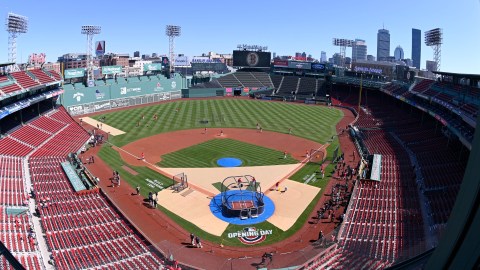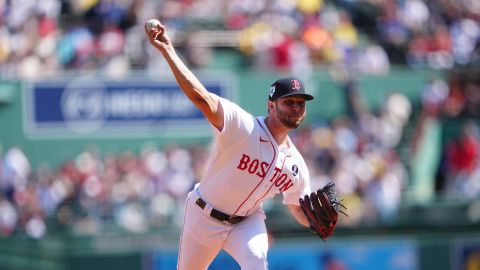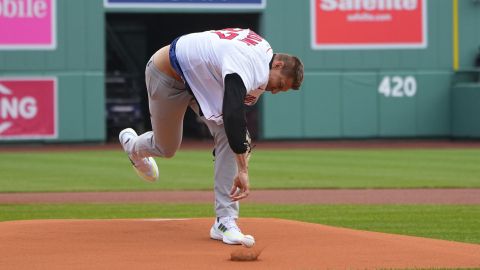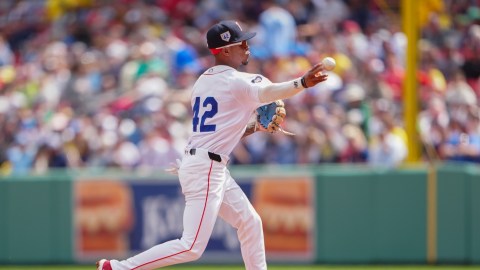Two dozen Red Sox players have been sent to the disabled list in 2010. Several have returned, only to be forced to revisit the DL and try again to get better. There have been long road trips, slumps, record heat in Texas and a constant need to play catch-up to the two teams ahead of the Red Sox in the AL East. To put it simply, the season has been a grind.
Playing through the ups and downs and ins and outs for six straight months — with off days coming as sporadically as an easy ticket to a Red Sox game — is all part of being a professional. In fact, as much as fans and onlookers look at ERAs and batting averages, the players and coaches know their job involves so much more than that.
In a veteran-laden clubhouse like Boston’s, you are not expected to let the laborious campaign get to you.
“I don’t think that’s an issue,” manager Terry Francona said. “It’s not part of the program. You go as hard as you can, as long as you can until they tell you to stop, until they make you stop.”
Where clubs like the Red Sox can get into trouble is when players who might be unfit try to push through walls, in order to help the team get the best lineup on the field each day. The result of such strategy has been evident in a handful of players reinjuring themselves or failing to provide much production when in there.
Jacoby Ellsbury, for instance, struggled in the nine games he played in August while trying to return from broken ribs for the third time. He was 4-for-34 (.118) without an extra-base hit before returning to the disabled list in the middle of the month and possibly seeing his season come to an end.
Fellow outfielder Mike Cameron admirably played through abdominal pain for much of the year before also being shut down in the middle of August. Like Ellsbury, the moments where Cameron looked like himself on the field were few and far between.
While teammates admire guys trying to come back, there’s something to be said for not trying too hard.
“Just as much as you think you are helping your team, sometimes it can be detrimental to your team and to you,” infielder/outfielder Bill Hall said of the situation.
Coping with “the wall” is an issue for many people in life, not just on the diamond. Whether forcing yourself to go to work while sick or not getting enough down time on weekends, it can be easy to become run-down.
Mark Dynan, a clinical specialist in orthopedic physical therapy at Beth Israel Deaconess Healthcare-Lexington, notes that there are several factors to consider in keeping the healthiest and most productive team on the field.
"The first thing is to make sure you get the job done on things you have control over — namely, offseason and preseason conditioning,” Dynan said. “Players and management know the season is a grind and should make sure the team is conditioned to last the entire season. It is also the reason that players have scheduled days off to give their bodies some extra rest. The stakes are too high to hit the wall due to a long season. Not only can player performance suffer, but fatigue and pushing oneself can lead to injury (muscle strain, tendonitis, dead arm and rotator cuff issues for pitchers)."
Coming back at the right time following rehabilitation from injury is another important factor.
"Players coming back from injury are dealing with a double-edged sword,” Dynan explains. “Come back too soon, and you can risk reinjury and/or subpar performance. Ramp up your activity slowly and gradually (as your physical therapist would recommend), and you may feel like your letting your teammates down or others may have the perception that you're dogging it.
“This certainly has been the case with Ellsbury this year. Ironically, X-rays and MRIs let us know when the injured structure has healed, but that doesn't mean a player is ready to go full speed in a game. After fracturing a bone, a person needs to prevent that bone from moving to allow it to heal.
“But it's not just the bone that stops moving. Everything around the bone is affected. Muscles, ligaments, joints are all impacted by limited mobility to allow healing. They all need to be conditioned appropriately for return to high-level activity.
“An X-ray showing the bone is healed doesn't mean a player is ready to go full speed. Just ask Dustin Pedroia how his foot feels after X-rays showed his bone had healed.
“Sometimes you just don't know if you can go full speed until you do it. Then the coach has to decide whether your full speed is good enough to help the team win."
Patience, sound judgment and listening to one’s body are three ways to get over the hump, through the wall and into the clear. If you’re not mindful of these things, as Francona said, you may be forced to stop.
“Then it’s time to take a deep breath,” Francona said. “Whether you win or lose, [do not push it]. Not now. Not going to help.”
For many Red Sox players and coaches, the deep breath doesn’t occur until after game No. 162 — or the end of the postseason. It’s all part of the program.



